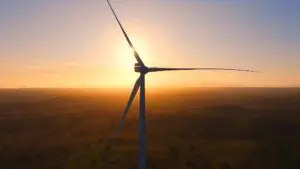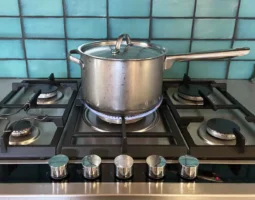There is renewed hope that Australia’s first large scale solar towers with storage can be built in South Australia after the state government announced a new tender designed to introduce new competition in the market and remove the stranglehold of the existing gas generators.
The South Australian government will relaunch a tender for 75 per cent of its own long term electricity needs, with the specific goal of introducing a new competitor into the market.

That has increased hope that a large scale solar tower project like that proposed by SolarReserve for Port Augusta could be built, although it appears that energy minister Tom Koutsantonis favours gas.
Bizarrely, the Pelican Point gas generator, which was built 17 years ago and had been mothballed because its owners saw bigger profits selling gas into the export market, will be allowed to bid into the tender, despite not strictly being a new competitor as it has been operating again since July.
Indeed, the state government is helping the case of gas by offering $24 million in assistance to bring new local production on line, to lower the cost of gas, and also appears to be under the mistaken impression that the new solar tower and molten salt installations rely on gas to deliver dispatchable power.
The dice if further rolled in favour of Pelican Point because the government contract is for 10 years. Although this is said to be “negotiable”, the shorter time frame gives a major advantage to a plant that is already built, and largely depreciated, over a new first-of-its-kind facility.
The S.A. government is under enormous pressure from consumers, the conservative media and the Coalition, over the cost of electricity in the state, and as its share of wind and solar reaches 50 per cent of local generation, and in some cases demand.
This may explain its preference for gas over new technologies, but it has historically been the price of gas and the dominance in the local market of a few generators that has caused the state to have higher wholesale prices than elsewhere.
Its strategy – if that’s what it is – of providing a new subsidy to a 17- year-old generator to ensure it stays in the market could backfire, because it could prompt AGL Energy to mothball one of its 50-year-old and highly polluting generators, which it had intended to do before Pelican Point was put on standby.
Indeed, there is a question about whether awarding the contract will solve the problem. If a new gas generator is built, then it is likely that one of Pelican Point or AGL’s Torrens will be mothballed. The problem may not be solved unless it can bring in new technology. But South Australia may just be happy to reduce the hold that AGL has over the market.
The state government held a tender for all of its electricity needs earlier this year, but decided only on allocating contracts for 25 per cent of its needs – relating to its carbon-free commitment to the Adelaide CBD – to smaller scale projects linking renewable energy with storage.
The new tender does not have an emissions limit, and is not technology specific, although it does say it wants to “reduce carbon emissions”. But by that it means substituting the amount of coal-fired power imported from Victoria.
Given the cost of gas in the market, and all things being equal, it is likely to give the opportunity for dispatchable solar plants, given that such projects have beaten gas and other thermal plants in recent tenders in Chile and elsewhere.
But Pelican Point may have an advantage, having already received a short term contract from the state government and some business groups to take 250MW of capacity out of mothballs. “Pelican point is entitled to bid into this,” Premier Jay Weatherill told media.
Furthermore, the state government says it will also commit $24 million towards a program to incentivise companies to extract more gas and supply it to the local market. It thinks this will be enough for 20PJ of gas, twice its annual need for gas generation.
In the recent electricity price spikes, the price of gas in South Australia hit $24/GJ, far more than other gas hub in Australia. That was due to supply restrictions.
Competition in the electricity market is a major concern for the state government, given the bidding patterns that helped force up the price of electricity in July. Numerous studies have suggested that the main gas generators exploited their market power and lifted their margins, adding $170-$190 million to the cost of supply.
The ACCC, the main competition regulator, said it saw no problem with that. South Australia has also been calling for a new inter-connector, possibly through NSW, to increase competition, but this could take several years to build.
“The small number of energy suppliers in South Australia have too much power – if we increase competition, we will put the power back into the hands of consumers,” Weatherill said in a statement.
“The current rules also let the big private electricity companies drive prices higher by withholding supply – these measures address this inadequacy. Increasing competition in the energy market is the best way to drive down power prices for South Australian households and businesses.”
Koutsantonis also said South Australians are at the mercy of a “small group of electricity generators”. He took particular aim at AGL Energy, which owns 50 per cent of the market. Its planned will not be allowed into the tender, despite flagging they would be mothballed and then reversing that decision.
Koutsantonis also blamed the previous Liberal Government that sold the State’s electricity assets to monopolies and scrapped plans for an interconnector to NSW to maximise the profits from asset sales.
The new tender could attract interest from SolarReserve, which has a 110MW solar tower and molten storage plant operating in Nevada and wants to replicate that in Port Augusta, and Lyon Solar, which is proposing a 100MW solar PV plant with 100MWh of battery storage near Roxby Downs.
It could also attract interest from Solastor Australia, chaired by John Hewson, which has boasted that it can provide the world’s cheapest 24/7 solar power using graphite technology, but it has yet to deliver any electricity to the grid in Australia and little is known about its Chinese pilot project.
Hewson caused controversy earlier this year when he attacked the solar tower and molten salt technology used by SolarReserve and other existing plants, saying they were redundant and dependent on gas-back up. That is not so, but it appeared to have stuck in the mind of Weatherill and Koutsantonis.
“It could be that some of these new technologies could be underpinned by gas boosters … (such as) solar thermal supported by gas generation,” Weatherill said. SolarReserve provides dispatchable power to Las Vegas from its Crescent Dunes plant with no gas back-up.
Community group Repower Port Augusta says the tender for the power purchase is the strongest lever the Premier has to make solar thermal happen for Port Augusta.
“Today’s announcement keeps solar thermal with storage well and truly on the table for Port Augusta. We urge Premier Weatherill to use this tender to secure Federal funding for a large solar thermal plant with storage in Port Augusta creating badly needed jobs and on-demand clean power,” said campaigner Dan Spencer .
“We had hoped this tender would be specifically for solar thermal in the Port Augusta region, but it is good news that the tender is open, keeping solar thermal on the table.
“Port Augusta badly needs new jobs following the closure of the coal station. This tender is the best lever the Premier has to make solar thermal happen for Port Augusta and help the community build a new future.
Any new big solar tower project will likely need support from the Australian Renewable Energy Agency, because it will be a first of its kind project in Australia. But the future of ARENA is clouded, despite it achieving a 40 per cent reduction in the costs of large scale solar PV, because both the Coalition and Labor want to strip it of funds.
South Australia also renewed its push for an “emissions intensity” scheme which it first raised at the COAG energy ministers meeting, as we reported exclusively at the time. It says the scheme will allow credits to be traded between energy companies at a national level. It intends to undertake further modelling in coming months.








